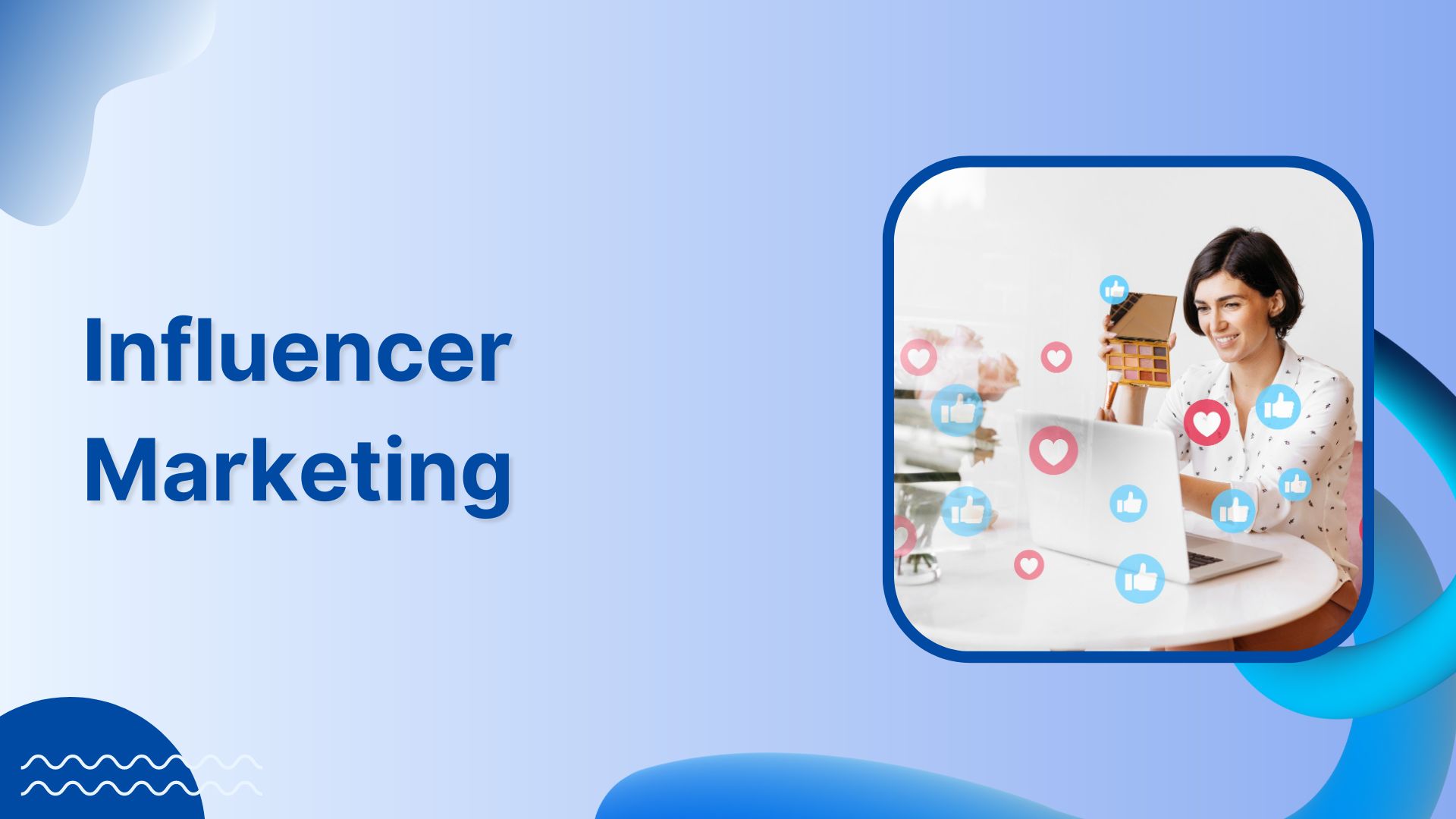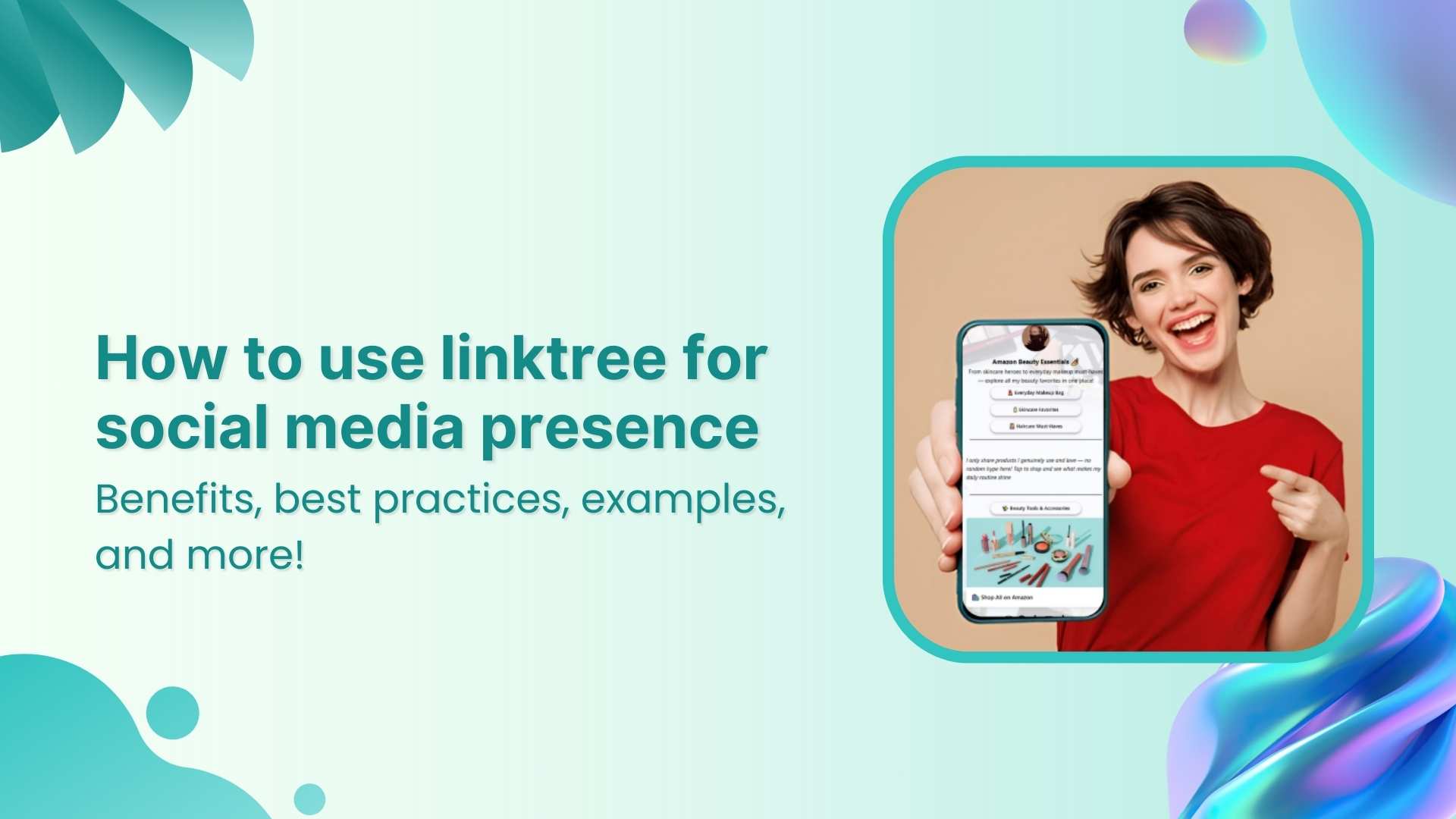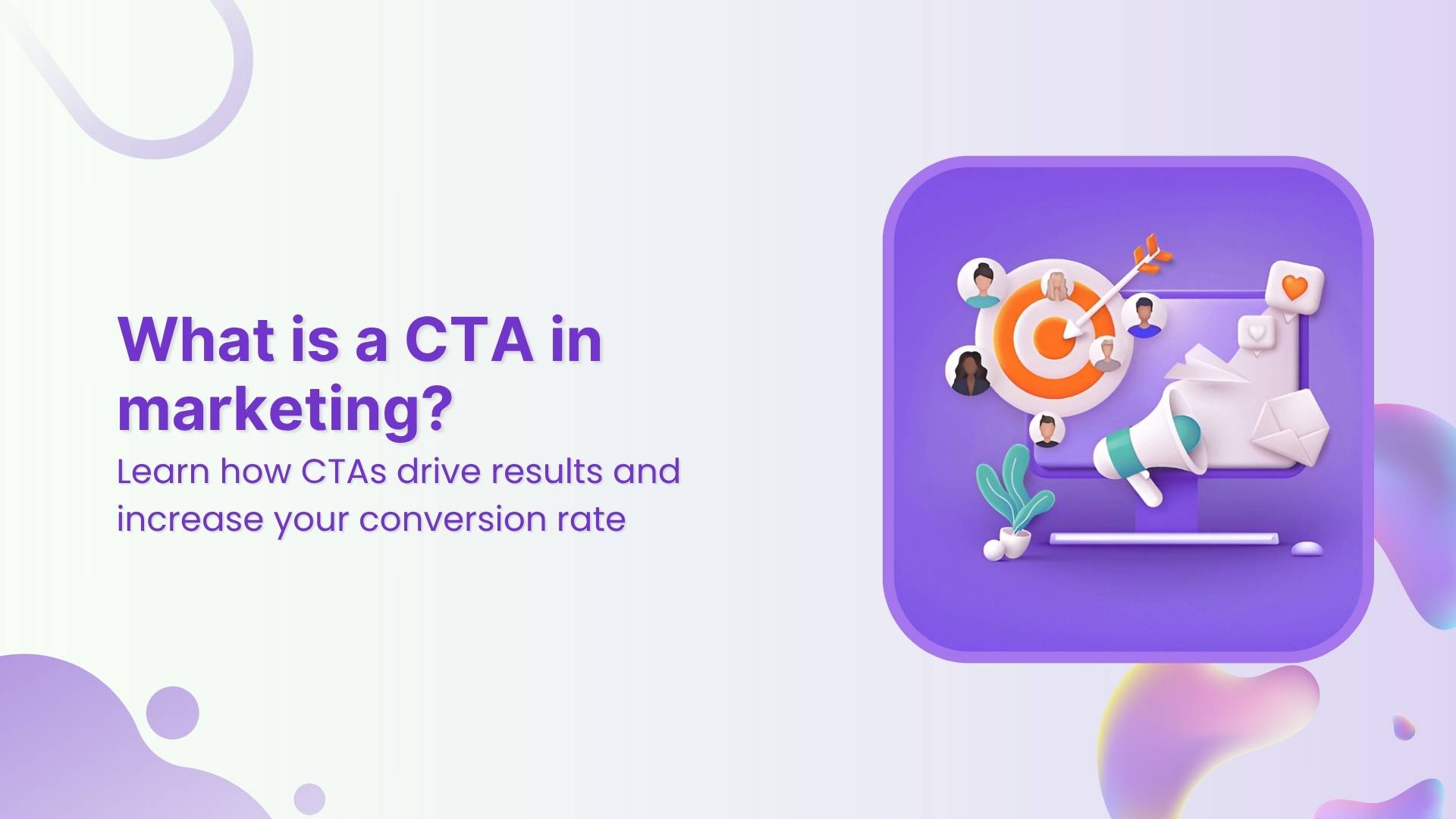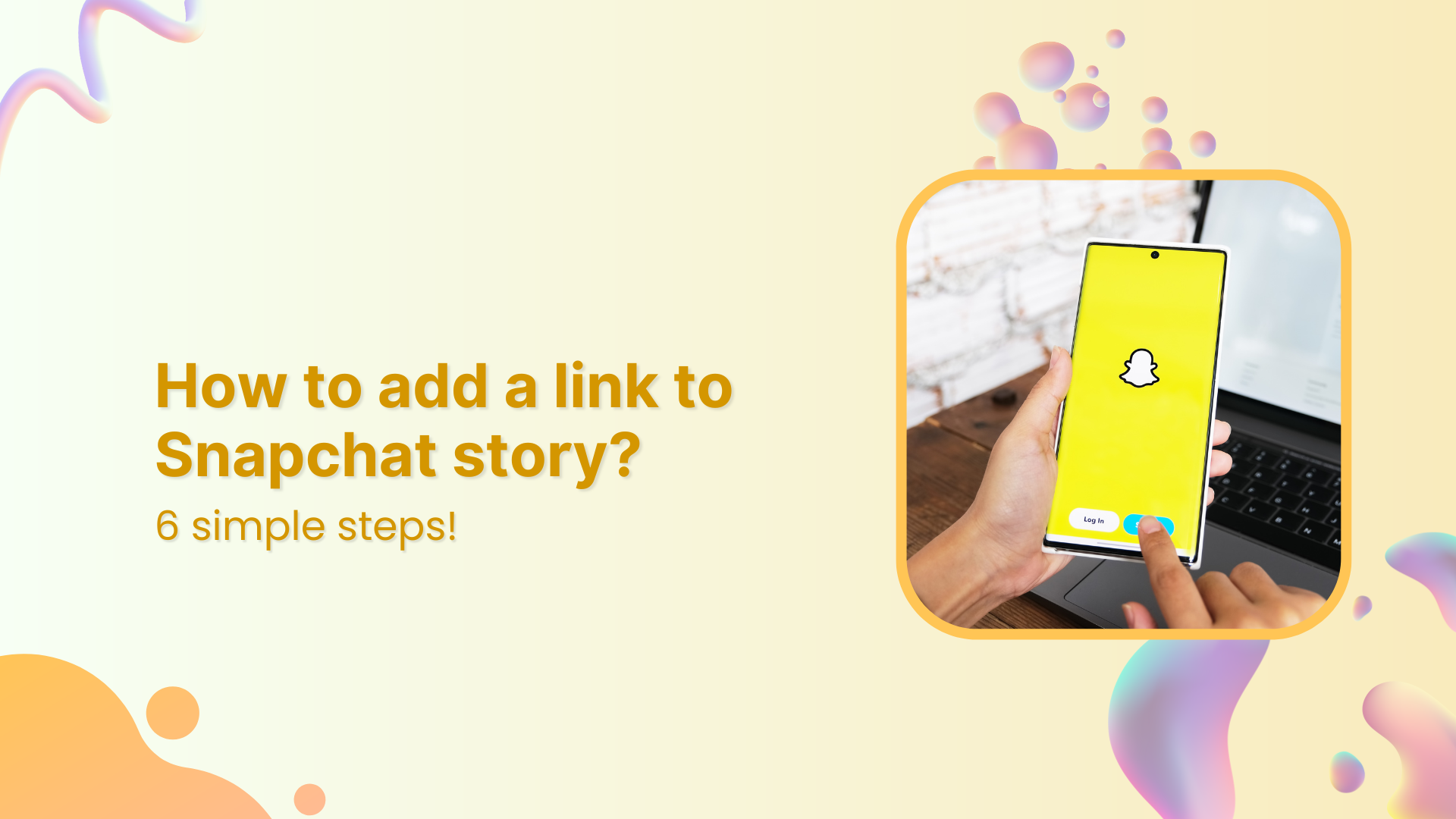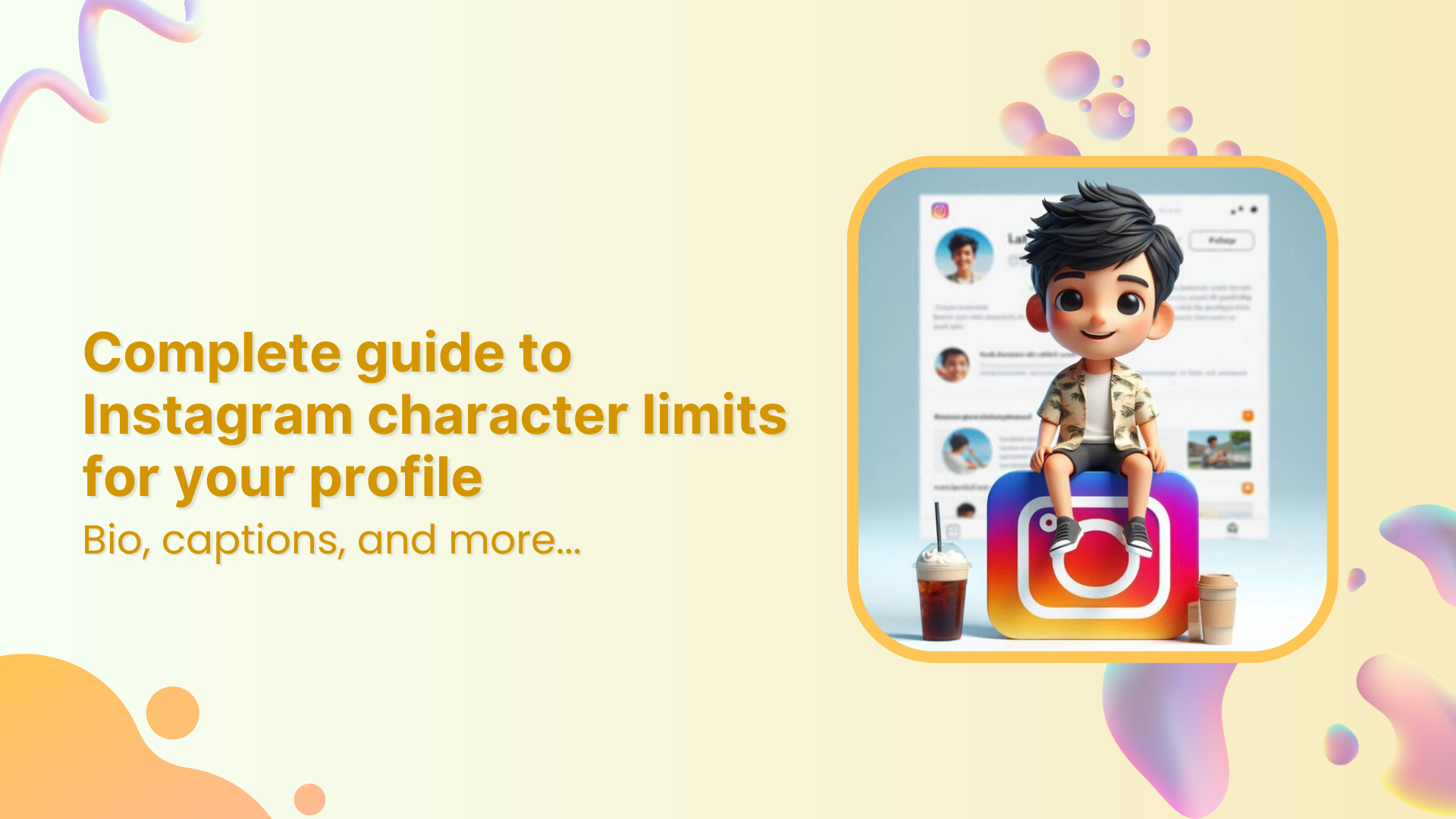Influencer marketing campaign steps are to establish goals, identify the right influencers, set strategy, measure results and readjust strategy.
You may have heard the term “influencer marketing” thrown around a lot lately, but what does it mean?
Influencer marketing is about leveraging relationships with key individuals who hold sway over their audience. These people could be bloggers, Vloggers, celebrities, or highly engaged customers.
If you want to set up a successful influencer marketing campaign, follow the five essential influencer marketing campaign steps. Read on to find out more!
1. Establish Your Goals
Before you start reaching out to potential influencers, you must first establish your goals. Do you want to increase brand awareness? Drive traffic to your website? Boost sales?
Once you know what you want to achieve, you can start identifying the right influencers to help you reach your goals.
Pro tip: As with any other marketing campaign, these goals must be “Smart”.
Let’s say you want more visitors to your website. A SMART goal would sound like this:
“I want to increase traffic to my website by 10% within the next three months.”
Why is this important?
- Having a precise goal helps you establish concrete key performance indicators to track it.
- You can pick the right strategy, tools, and messages for this goal.
- You can find the right influencers for your purpose.
Take this example:
Andy Neal is a plus-size model, hiker, and micro-influencer. His (funny, emotion-filled) posts mostly show him hiking in different environments. Andy has talked at length about his mental health and how hiking outdoors has helped him become more grounded.
As an advocate for health at every size, Andy Neal is the perfect influencer for companies retailing plus-size clothing.
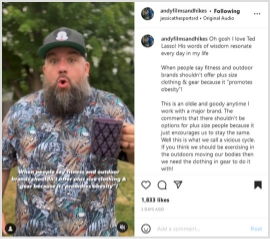
In the post above, you can see Andy touching on a current online controversy: does promoting plus-size gear also mean promoting obesity?
That question raises people’s interest, warming them up as the presented opinion elicits different emotions (intrigue, indignation, approval, and so forth). After reading Andy’s arguments, the followers are presented with a question and the author’s answer:
“Do you have a favorite brand you wear for the trail or the gym or for exercise?
You all know my answer, @columbia1938 !”
After warming his followers up with his diatribe, Andy savvily introduces the brand he’s wearing. That way, after building up people’s approval, they’re more likely to click on the brand mention, thus increasing the traffic.
As such, this post’s primary goal is to raise traffic. The subordinated objective could be increasing sales as people who like the brand’s Instagram posts may also click on its website.
However, raising sales isn’t the main goal because there’s no discount code or direct link to the company’s product pages. You can also notice the perfect fit between the brand and this influencer.
That brings us to the next influencer marketing campaign step.
2. Identify the Right Influencers
Not all influencers are created equal. When looking for people to promote your brand, it’s important to find ones that are a good fit. This means considering factors such as audience, engagement rate, content style, and personal values.
Let’s say you run an eco-friendly fashion brand. You would want to look for influencers who care about sustainability and are likely to resonate with your target audience.
Remember: You also need the right influencers for your goals.
But can you tell if one content creator is better to increase your visibility, boost your sales, or win back old customers?
Yes, and here’s how:
a) Suppose your goal is to increase traffic to your website:
In that case, you’re looking for influencers likely to link to your site in their content. That’s why looking for content creators in your industry would be beneficial.
These people should be popular and know how to push their follower’s emotions. They should create FOMO, desire, trends, and controversy like no other.
That’s exactly what Andy Neal did in the previous example.
Related: 7 Ways to Increase CTR for Better Conversion on the Website
b) Or suppose you want more people to buy your product:
In that case, you’ll be looking for influencers with an engaged following on social media, preferably people who have previously talked about similar products.
In this case, you’re looking for more objective influencers. These people can have direct conversations with your audience, convincing them of your product’s true benefits.
One good example, in this case, is Carter Sullivan for the Mogo App. Mogo is an online app that helps people become more financially responsible as they keep track of their expenses. As such, users can get out of debt, save money, and build their financial freedom. If you’re already dealing with financial strain, particularly from existing debt, finding a debt relief service near you can be a practical way to regain control and ease financial stress.
The company’s main audience is Gen Z, Carter Sullivan is an excellent choice. As a Zoomer with some previous debt she got out of by using Mogo, she’s perfect for explaining to people the app’s advantages.
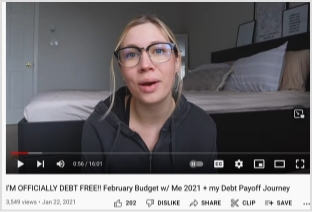
Pro tip: Nano-influencers, although they have smaller audiences, are better at direct contact. That means they can actively engage in conversations about your product with their fans, convincing them to buy your brand.
c) Suppose you want to re-engage old customers that have moved on to a different brand:
In this case, looking for an influencer who’s already talking about your industry but isn’t necessarily promoting any one brand would make sense.
You want an expert in the field who’s identified one key issue with their audience that only your brand can solve.
Here’s a potential example:
Let’s say you’re retailing organic food, but following the latest financial developments, your products have become too expensive for some of your audience. In this case, you can focus on one of their most poignant needs.
And studies show that people often buy products if they feel they’re making a difference. This is especially valid for Gen Z and Millennials, but also Gen X.
So, you could partner with a local influencer that explains the importance of supporting local producers in troubled times. Alternatively, you could partner with a content creator that promotes eco-friendly, locally sourced brands.
Focusing on health and supporting the environment may bring back some old customers.
However, the premise we started from was the price being the central issue. To solve this, you can consider adding a discount or exclusive access to some products through your content creators.
It’s all about strategy. We’ll talk about that below, but for now, here are just a few reminders before we get started:
- Some influencers may be fake:
To avoid being duped, use a fake influencer checker.
- Use an engagement rate calculator:
Regardless of your goals, you want to ensure your content creators hold sway over your audience. So, simply having a large following isn’t enough; you want to make sure those followers are involved (quality comments and shares are just a few examples).
- Use the proper channels to find influencers:
From Google to hashtag searches on social media, geolocation searches, and dedicated platforms or AI software – the world wide web is your oyster. You can also use your professional network, search through your customer & supplier databases, or Google your brand mentions. But all that may take a lot of time. If you’ve never worked with content creators, your best bet is contacting an influencer marketing agency. The best ones will work with you tightly instead of ignoring your plans, offering comprehensive services. That way, you can learn the ropes and adjust the process to your needs seamlessly.
- Before boarding your influencers, create foolproof contracts:
Outline all terms, rights, and obligations for both parties. That way, you can ensure your influencers deliver the promised content without delays or social media risks.
Related: 7 Strategies to Ensure Your Next Influencer Marketing Campaign Is a Success
3. Define Your Influencer Marketing Strategy
Now that you know your goals and who the right influencers are, it’s time to start planning for your influencer marketing campaign.
Remember: There are various ways to collaborate with an influencer, but not all of them will be a good fit for your brand. The key is to find the one that best aligns with your goals.
Some standard options include:
- Shout-outs:
A mention of your brand on social media, in a blog post, vlog, or even in a podcast. The goal is to increase visibility, driving more traffic to your website. The influencer may or may not receive compensation for this.
Shaina, a creative fitness and yoga teacher, offers a good example. She usually posts Instagram and TikTok videos showing quick (but muscle-torching) routines, thus promoting her app. In this post, however, she mentions Altra Running using emphatic words: “officially hooked,” “shoe struggle,” “ONE time,” etc. You can also notice the build-up and the hyperboles paired with the objective product description. The CTA “Go get yours” written in capital letters and followed by three exclamation marks is very convincing because:
- It’s the natural continuation of the previous points.
- It’s nicely fitted between an accurate product description and the workout’s structure details. As such, Marie’s CTA pops out between two less intense arguments with a rhetorical force that would make Aristotle proud.
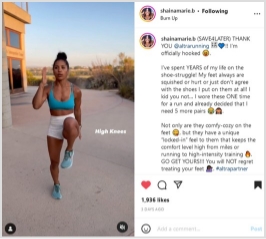
Related: 60 Best Call To Action Phrases To Increase Click Through Rates
- Reviews & unboxing videos:
The content creator uses and reviews your product on their channels, driving awareness and teaching their audience about its features and benefits. These videos work great for products that are hard to explain with words alone or if you’re targeting tech-savvy audiences that prefer seeing a product in action before they buy it.
- Tutorials & how-to’s:
The influencer uses your product to create content that’s helpful to their audience. For example, a cooking influencer could use your kitchen supplies to show their audience how to cook a specific dish. These videos are great when you want to position your product as the solution to a problem your target audience is facing. It’s also what Carter Sullivan did for Mogo in the above example.
- Contests & giveaways:
The influencer runs a game on their channels, with your products or services as prizes. This is a great way to increase engagement and get people talking about your brand.
- Sponsored posts:
The influencer promotes your brand on their channels in a paid partnership. These can be in the form of written blog posts, social media posts, or even videos.
In the post below, Jo promotes three products: a wig, underwear, and a new pantsuit – all from three different brands. What makes this sponsored post different?
You can see Jo using the products, showing how they fit her specific body shape and image.
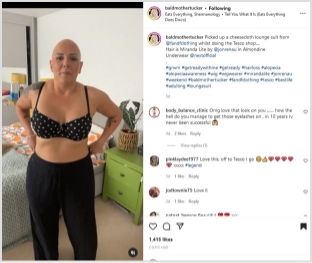
You can see a nice contrast with the following example. Dr. Noc is a Ph.D. immunologist. Both his TikTok and Instagram clips aim to educate a large young audience on different science and medicine-related topics.
This is a great way to increase engagement and get people talking about your brand, leveraging user-generated content on TikTok or Instagram.
Bonus: Dr. Noc is always dressed up, wearing a shirt and a nice pair of pants.
That’s why this clip below is so catchy.
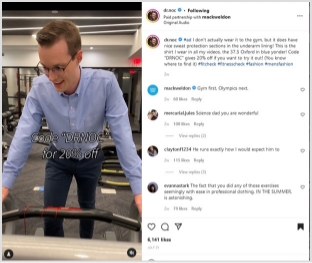
People can get a kick from seeing Dr. Noc running on the treadmill and lifting weights in his Mark Weldon shirt and pants. Besides, the video is the visual representation of a pun; Dr. Noc asks his followers if they ever get tired in the gym, saying that it never happens to him because he’s always “professionally attired.”
Why it works:
Humor is an effective rhetorical strategy because it suspends critical analysis. On this permeable ground, the 20% discount code is the final push people need to access the Mark Weldon website and buy from it.
Remember: Both these videos use emotion and strategies that fit the content creators’ personalities. The result is they don’t seem sales even if they’re sponsored posts.
- Product placement:
The influencer features your product prominently in their content without explicitly talking about it or promoting it. This is a great way to subtly get your product in front of a new audience.
4. Measure the results of your campaign
There’s no point in running an influencer marketing campaign if you’re not going to measure the results. After all, you need to know what’s working and what’s not to adjust your strategy accordingly.
Some of the most important metrics to track include:
- Reach: How many people saw your campaign?
- Engagement: How many people engaged with your campaign (liked, commented, shared)?
- Website traffic: How much traffic did your website get due to the campaign? (You need URL tracking.)
- Sales: How many sales can be attributed to the campaign? (Follow your discount codes and UTM links)
You can use Google Analytics, social media analytics tools like Replug or ContentStudio, or even a simple spreadsheet to track these metrics. Just make sure to monitor progress over time to see whether your campaign is successful.
Remember: The indicators above will differ according to your goals. Even if all companies eventually want to increase their ROI, your objective, for now, can be a higher reach without emphasizing sales, traffic, or engagement.
Warning: Don’t become complacent!
If your audience is warmed up enough to buy your products, don’t create yet another engagement campaign. That’s another reason why working with an influencer marketing agency is essential at first; an experienced agency will be able to guide you outside your comfort zone, advising you wisely according to your current stats.
5. Adjust your strategy as needed
Lastly, once you’ve measured your campaign results, the next step is to make some adjustments to your influencer marketing campaign. If something isn’t working, don’t be afraid to change it.
For example, suppose you’re not getting the reach you wanted.
In that case, you might need to consider working with bigger-scale influencers, diversifying your channels, or including social media ads into the mix. If engagement is low, you might need to adjust your content or offer more incentives for people to engage.
The important thing is to be flexible and willing to change things up if necessary.
Influencer marketing is an ever-evolving field, and what works today might not work tomorrow. The only way to find out is to experiment and see what works best for your brand.
Wrap Up
Influencer marketing can be a great way to reach new audiences and promote your products or services. Following the steps above, you can set up a solid campaign to help you achieve your business goals.
FAQs
What is an influencer strategy?
It is a strategy that brand use and collaborate with other influencers to promote their brand services and products.
What are the 5 characteristics of a good influencer?
5 characteristics of a good influencer are:
- Tech savy
- Produces quality content
- Keep audience engaged
- Engagement rate above 5%
- Trustable
Who is the biggest influencer?
Cristiano Ronaldo is the biggest influencer.
Author bio:
David Morneau is the co-founder and CEO of inBeat, a hybrid micro-influencer marketing SAAS/agency that helps brands scale their marketing efforts. He has helped over 200 DTC brands to date.



























